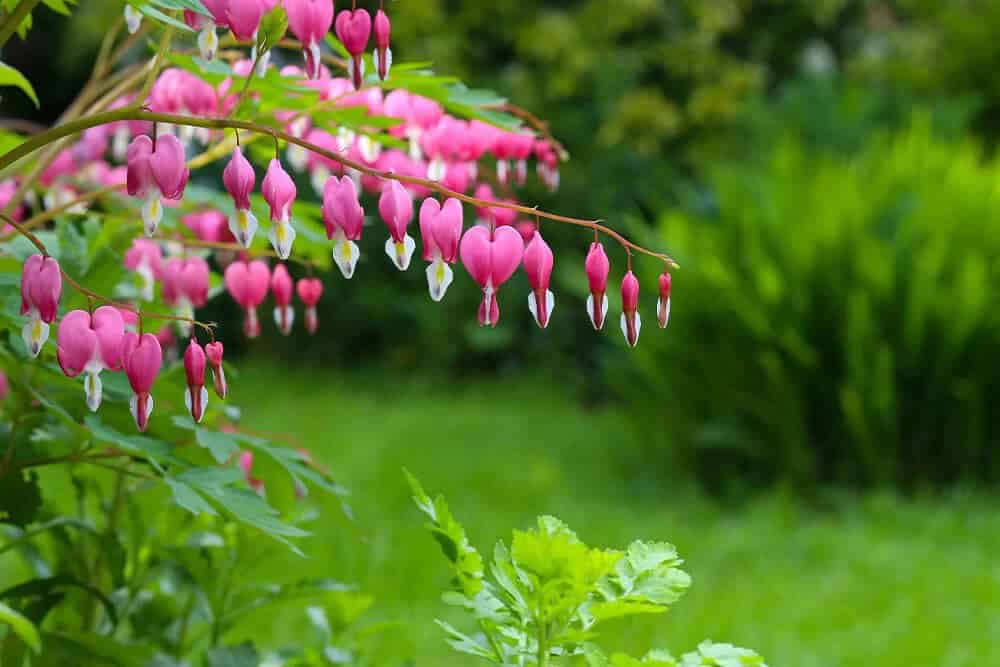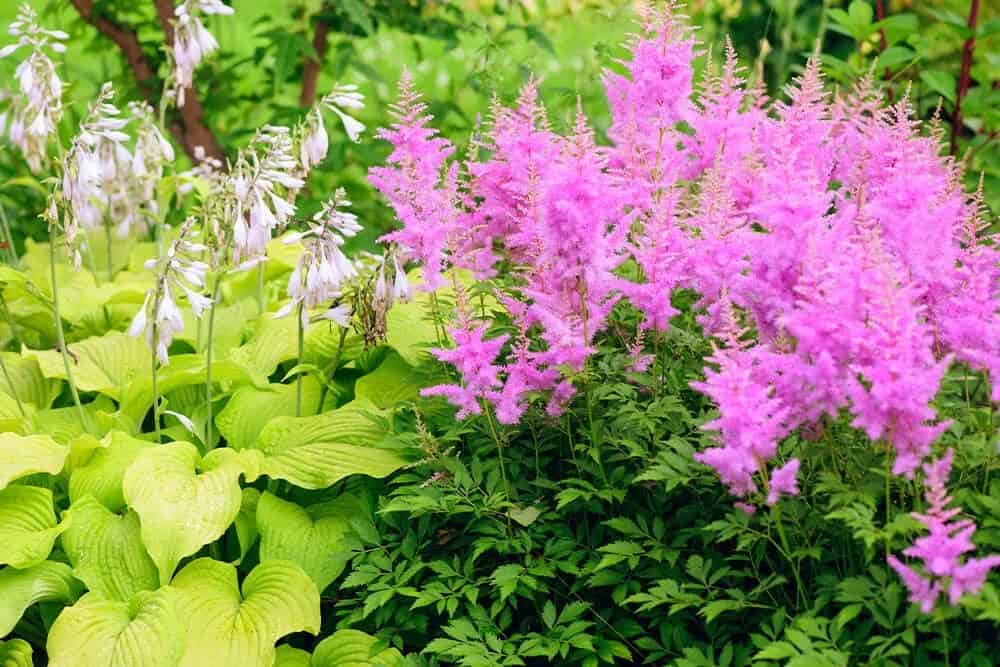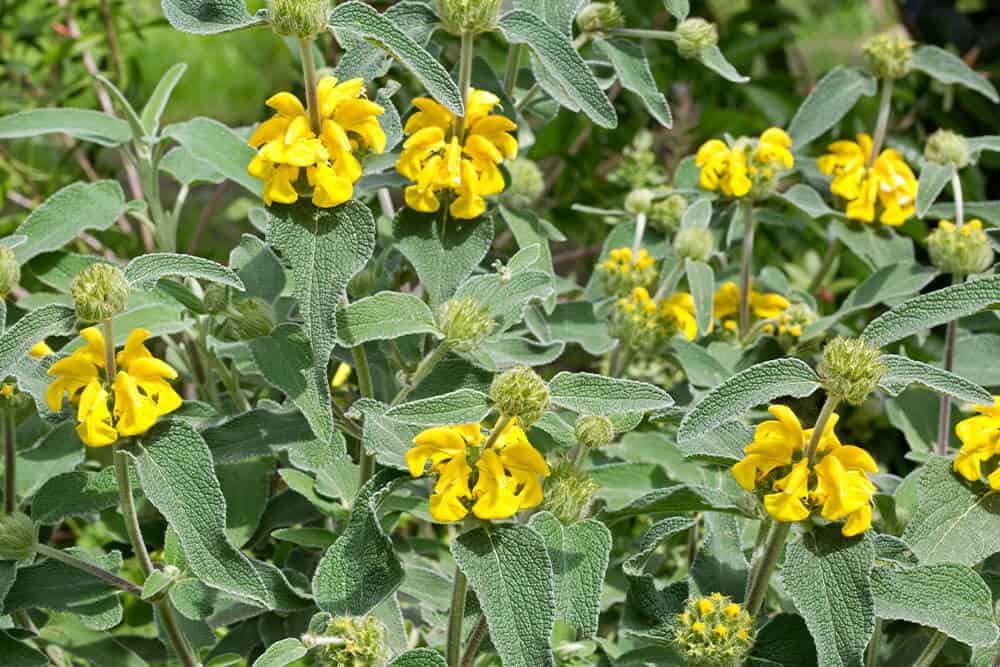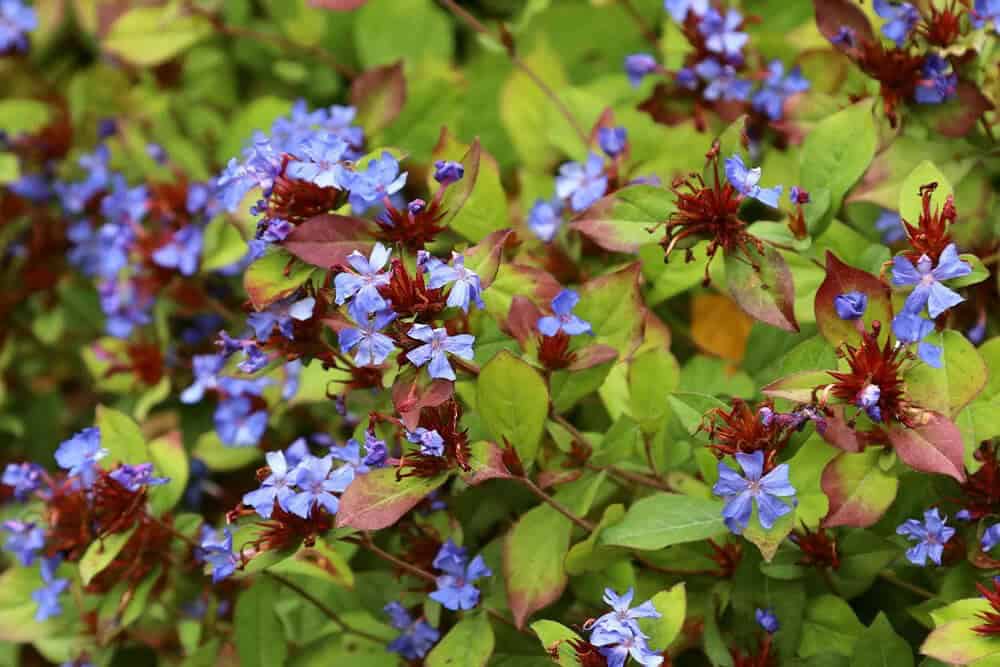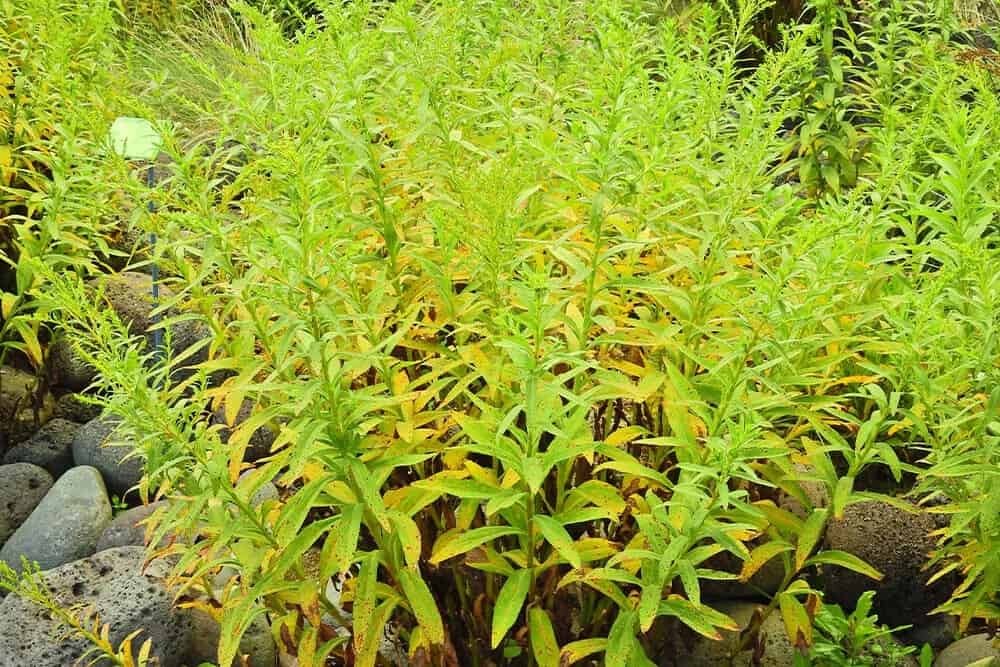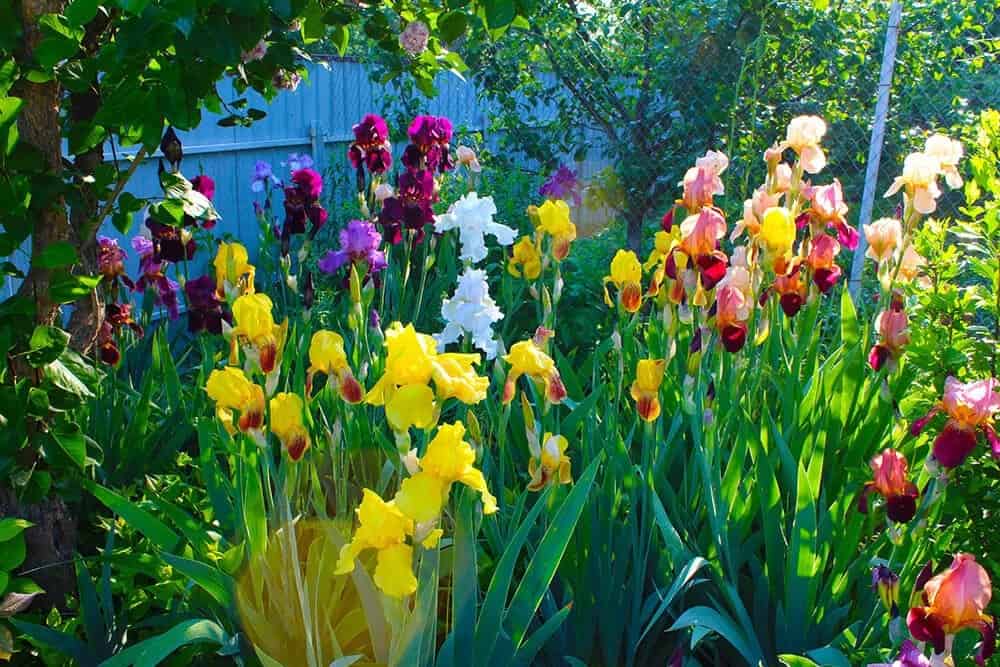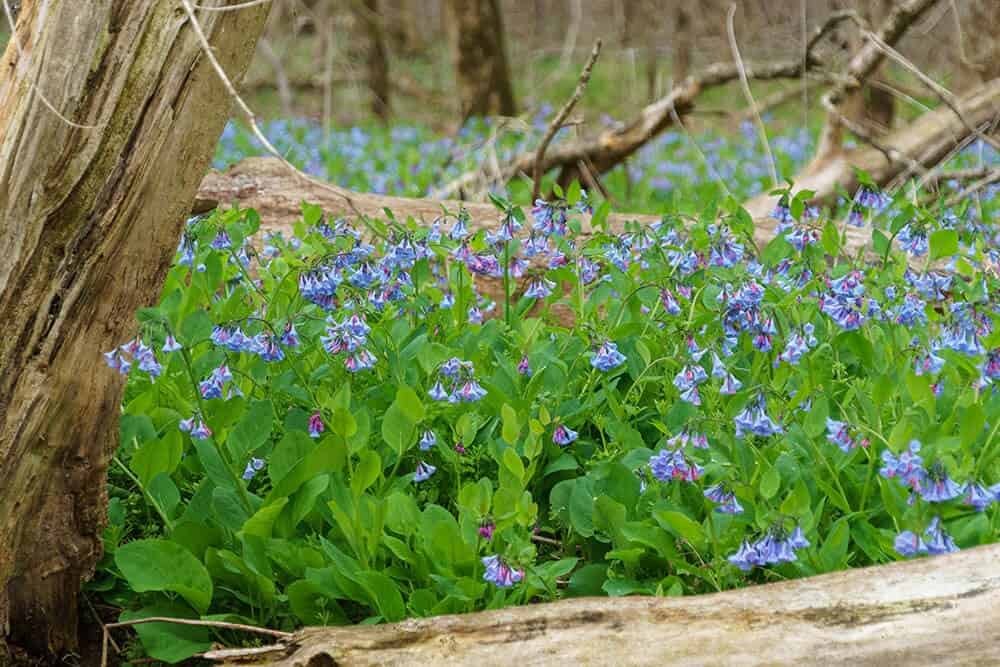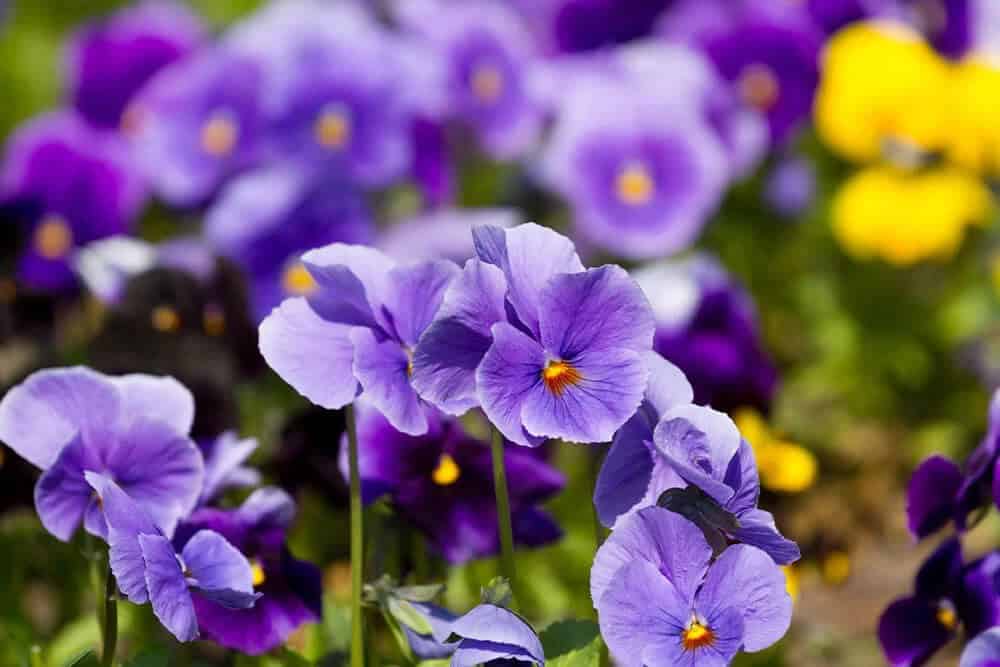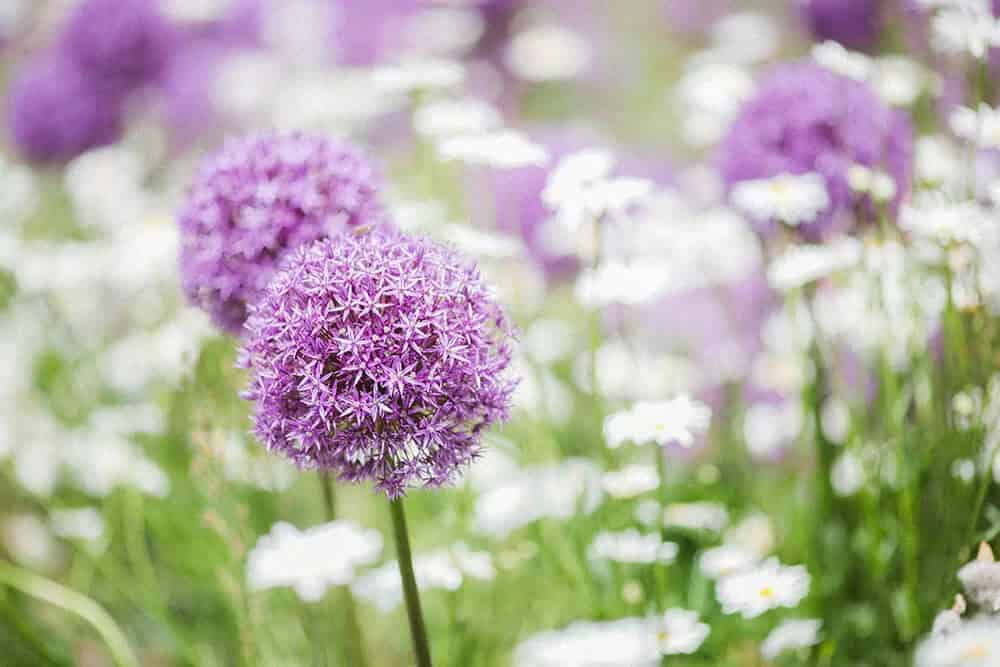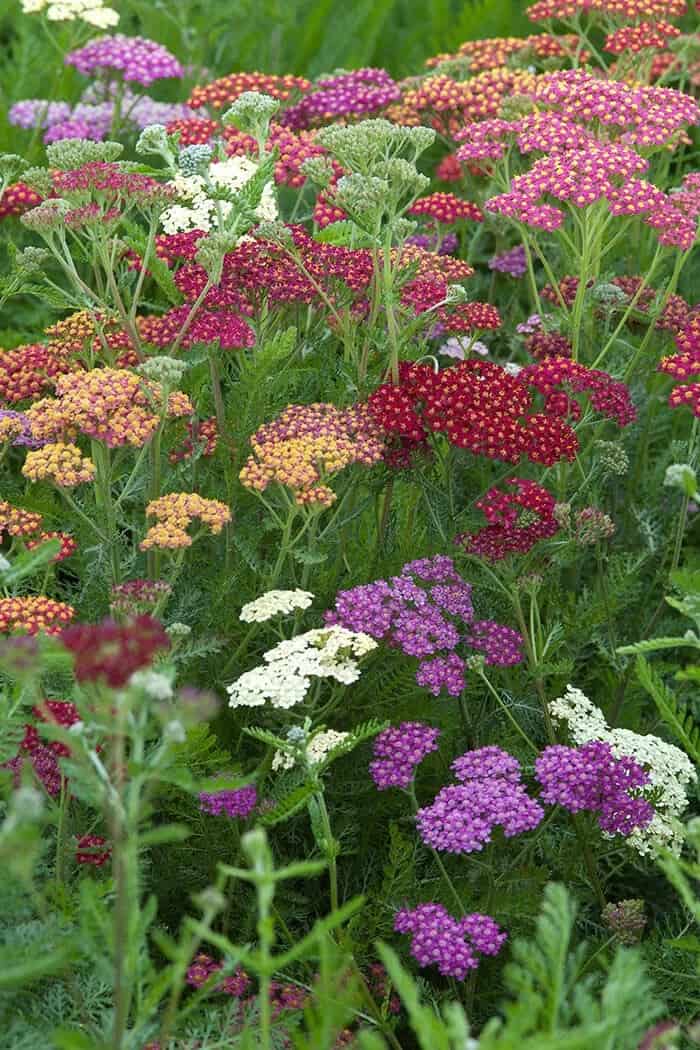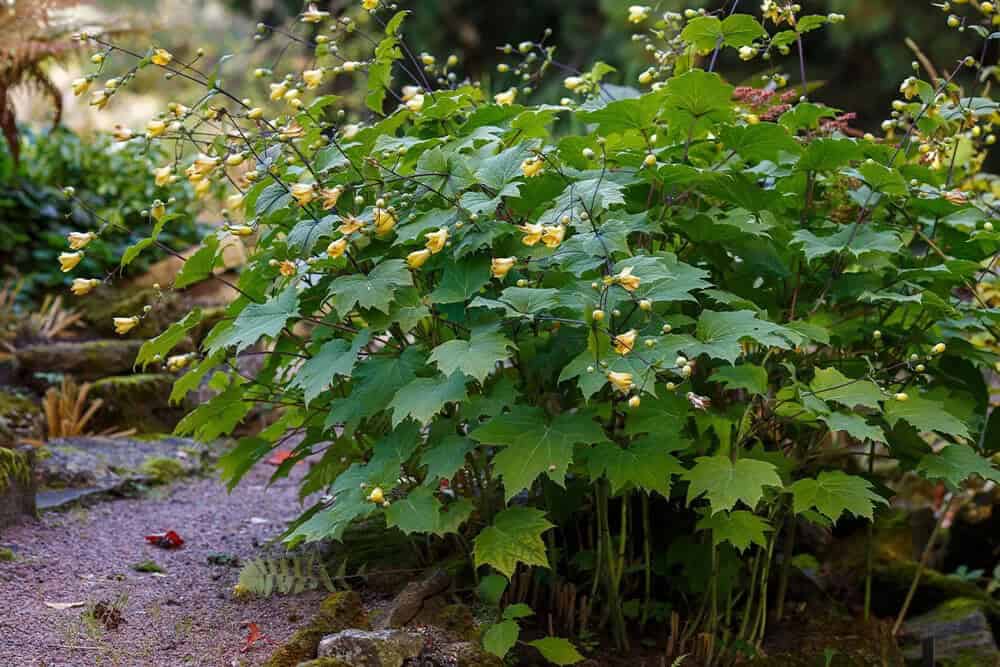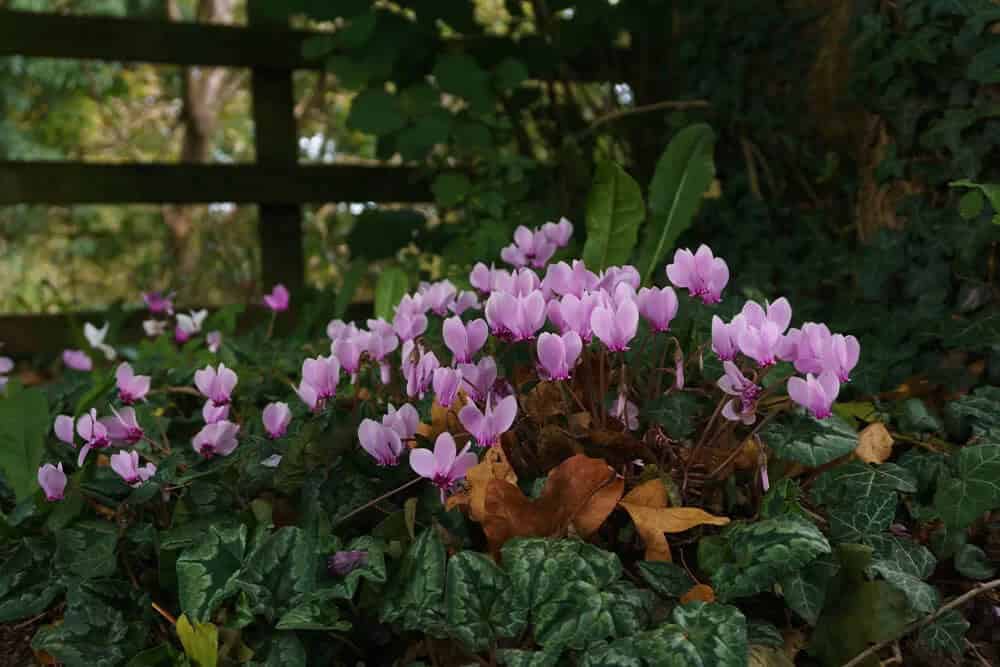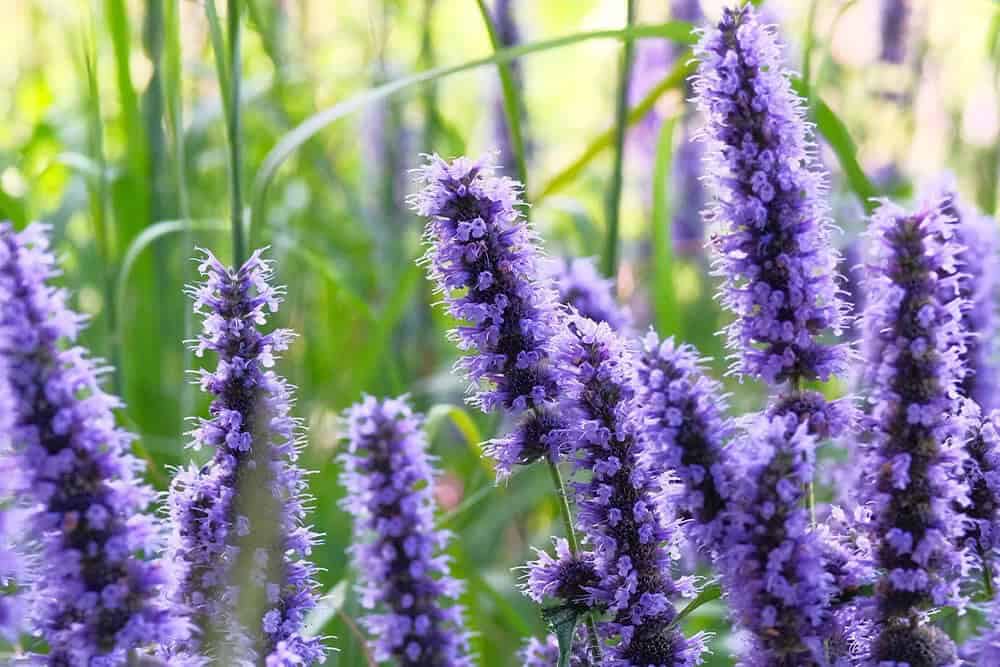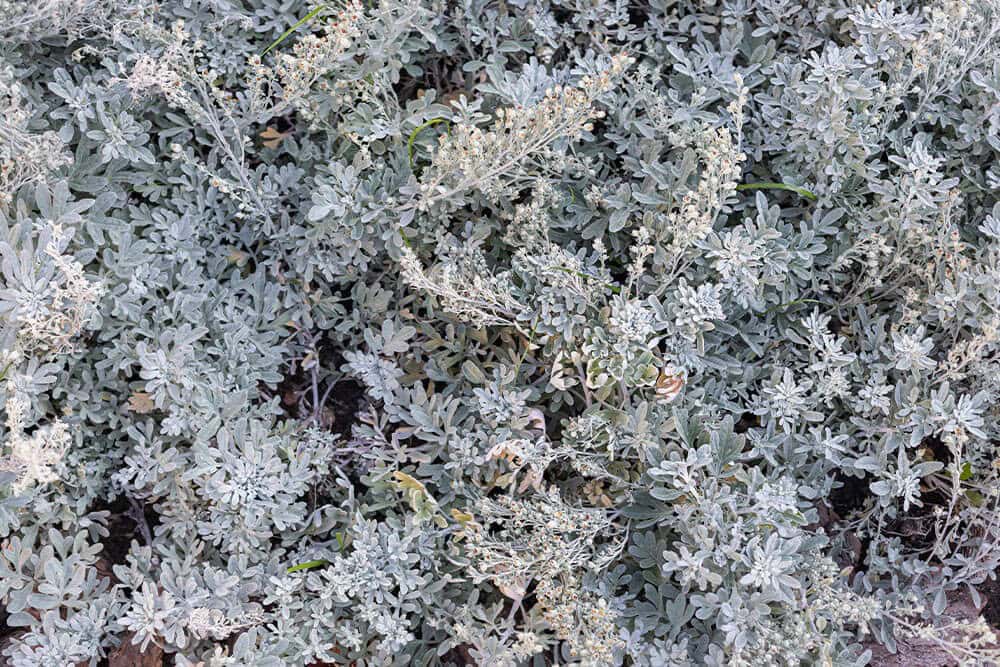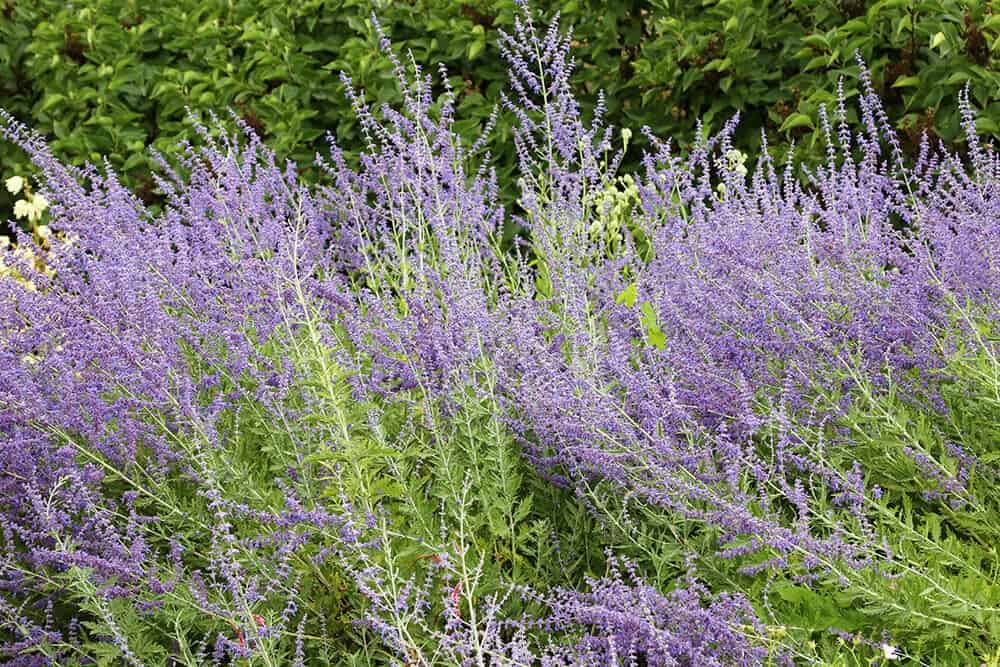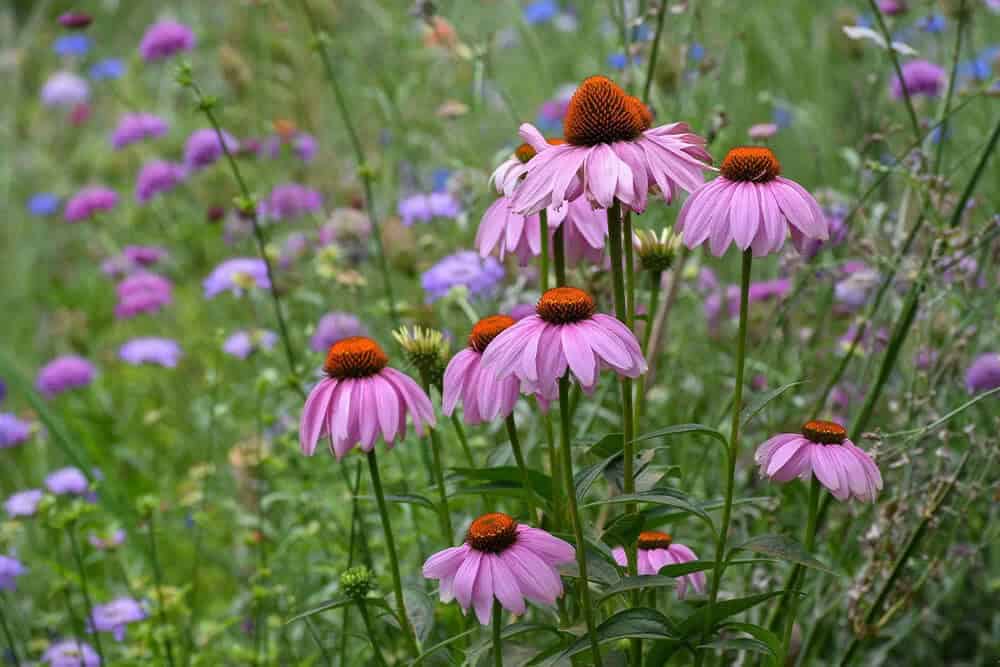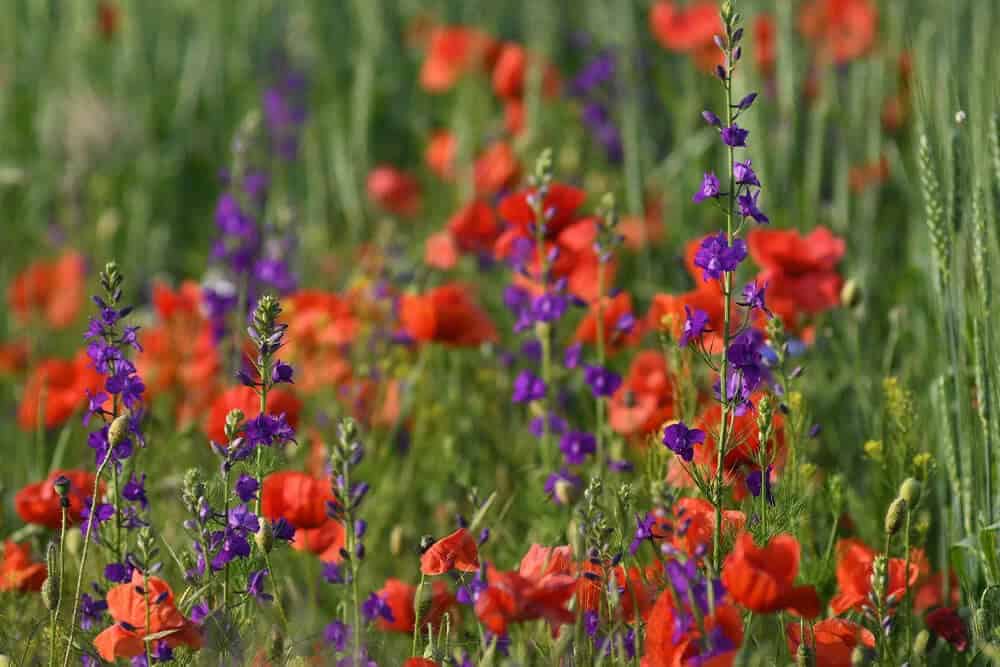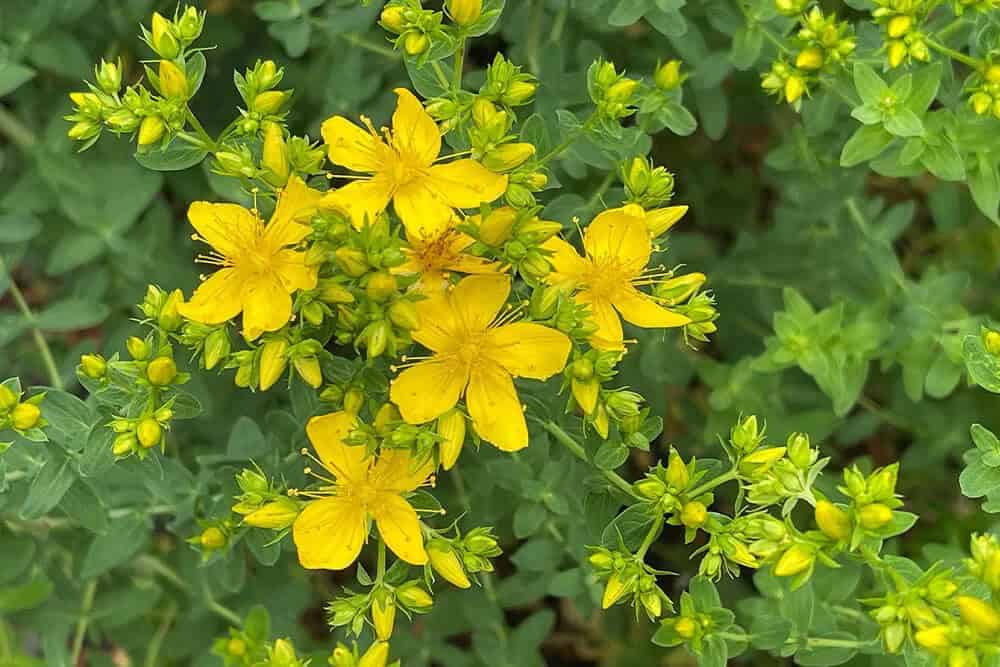Many gardeners would consider it a significant perk if their plants attracted wildlife, such as songbirds, butterflies, or bumblebees. However, when it comes to deer, the situation is different. While it’s understandable to feel thrilled about seeing these animals in your yard at first, they can quickly become an unwanted guest. Like that neighbor who consistently borrows items without returning them, deer can be relentless in their pursuit of your garden’s treats.
They may seem harmless initially, but once they’ve found a reliable food source, they’ll return again and again, often taking advantage of your absence to feast on your hostas or other favorite plants.
26 Deer-Resistant Perennials that You’ll Love (But Deer Won’t)
Key Takeaways
Deer tend to prefer browsing in gardens that are perceived as low-risk environments. This means that plants located near human dwellings, regardless of species, may be relatively safe from deer damage. However, many areas have seen deer habituate to human presence, rendering this strategy ineffective. Gardens can resist deer damage through various mechanisms. Some plants contain toxic compounds that deter herbivores, while others are unpalatable due to strong scents or flavors.
Physical characteristics, such as thorns or spines, can also make it difficult for deer to feed on certain plants. In some cases, plants may even employ a strategy of dying back to the roots before being consumed by deer, effectively escaping damage. Strong-scented plants can serve as an effective deterrent against deer, repelling them through their potent aromas. These plants can be used as a ‘smoke screen’ to protect more vulnerable plant species.
The mint family (Lamiaceae) is particularly well-represented in this regard. In addition to toxic and strongly-scented plants, some gardeners may opt for those with physical characteristics that make them difficult for deer to consume. For instance, very low-growing plants can be ignored by deer in favor of taller alternatives. Toxic plants may seem like the most effective way to deter deer, but caution is advised.
Non-native plants may not register as toxic to deer, and even native species can pose risks to pets or young children. As such, gardeners with outdoor pets or young children should exercise care when selecting plants for their gardens. It’s also important to recognize that some plants may be only partly deer-resistant, with certain life stages being more resistant than others.
For example, echinacea flowers may be too tough and spiny for deer to consume, but the plant itself is still vulnerable to damage before flowering. In reality, few plants have entirely escaped the threat of deer damage. If deer are particularly hungry or desperate, they will still feed on supposedly ‘deer-proof’ plants. On the other hand, some plants serve as a veritable feast for deer and should be avoided in areas where these animals are present.
Examples include azaleas, hostas, tulips, and many plants within the rose family. Ultimately, the best approach to maintaining a deer-resistant garden is to ensure that deer do not become habituated to human presence. This means resisting the urge to feed deer, just as one would with coyotes or bears.
Bleeding Heart (Dicentra spectabilis)
Bleeding heart’s delicate, pendant pink flowers are a delightful sight to behold. The intricate design features a tiny ‘heart’ shape, complete with a white inner petal resembling a droplet of ‘blood’. This whimsical appearance belies the plant’s remarkable resilience: it thrives in hardiness zones 2-8, tolerates partial shade, and stands up admirably against deer foraging.
Despite being a perennial, bleeding heart’s blooming period is relatively short-lived, with flowers appearing in early spring before the plants die back to their roots during summer’s warmth. Rest assured, this dormancy is merely a natural part of the plant’s life cycle – not a harbinger of death! By pruning the plants after their initial bloom, you can encourage a second flowering, but it may be wise to supplement with summer annuals to maintain a lush appearance throughout the growing season.
Astilbe (Astilbe spp.)
Astilbes are unsung heroes of the shade garden, delivering a profusion of pink, white, and purple flowers with minimal maintenance, even in deep shade. But their appeal extends far beyond their showy blooms: the delicate, lacy foliage provides year-round interest, while some varieties boast striking red hues that beautifully contrast with the vibrant flowers.
What’s more, astilbes attract a desirable clientele – bees, butterflies, and other pollinators are drawn to the vibrant blooms, while deer, rabbits, and squirrels tend to leave them be. (It seems taste is subjective.)
This versatile perennial can thrive in an incredibly broad range of conditions, depending on the variety – from zone 9 to zone 3. In colder climates, astilbes excel in full sun, while plants in hotter regions prefer fully shaded locations.
Jerusalem Sage (Phlomis fruticosa)
Jerusalem sage may not hail from Israel, nor is it a true sage – yet its allure remains unchanged regardless of its classification. Like Shakespeare’s rose, this plant’s sweet fragrance would captivate even if it were called by a different name. In reality, Jerusalem sage’s intoxicating aroma doesn’t emanate from its yellow flowers, which are surprisingly scentless. Instead, the potent essential oils within the woolly gray-green foliage release their fragrance, especially during hot weather.
This enticing scent serves as a deterrent for deer, who tend to avoid the plant altogether (a phenomenon you’ve likely encountered before). Not for the first time on this list will you encounter sage – but in this case, Jerusalem sage’s unique characteristics set it apart. As a full-sun perennial, Jerusalem sage thrives in direct sunlight.
Shade can hinder blooming and cause plants to become leggy; conversely, plenty of sun enables the plant to adapt to a broad range of soils and moisture levels. It’s a hardy perennial between zones 5 and 10, but north of zone 8a, it will die back to its roots. In contrast, further south, Jerusalem sage behaves more like an evergreen semi-shrub.
Hardy Leadwort, Plumbago (Ceratostigma plumaginoides)
Despite its common name ‘plumbago’, hardy leadwort is not closely related to true plumbagos. Its blue flowers, which bloom in mid-summer and persist into autumn, share a striking resemblance with their namesake – even the scientific name refers to this similarity. With an abundance of blooms and a mat-forming habit, it’s an ideal choice for groundcovers or underplantings.
Furthermore, hardy leadwort is impressively resilient, repelling deer and exhibiting self-weeding properties as its roots secrete natural chemicals that inhibit other plants’ seeds from germinating. However, under optimal growing conditions, it can spread more than intended, so keep a watchful eye on your plantings to prevent any would-be escapees.
Peonies (Paeonia spp.)
The peony’s reputation for being slow to bloom is well-deserved, with new plants often taking three or four years to produce flowers. And even when they do finally bloom, the show may be short-lived, lasting at most a week before the flowers begin to wilt.
However, if you’ve ever had the pleasure of growing peonies, you’ll know that this brief window is worth waiting for: their enormous, fragrant blooms are truly unparalleled in the ornamental world and come in an astonishing array of colors, from classic pink to striking shades like sky blue and nearly black.
One of the peony’s most attractive qualities is its deer-resistance – a quality that makes it a popular choice for gardeners looking to protect their plants from these pesky critters.
But it’s not just deer that are kept at bay: peonies are also frost-hardy, thriving in temperatures as low as -50°F (zone 2). In fact, the plants actually require this kind of cold weather to produce flowers.
While individual blooms may be fleeting, the peony itself is a long-lived plant that can continue to bloom for decades – up to 100 years or more.
To maximize your peonies’ bloom time, consider planting early-blooming and late-blooming varieties together: by doing so, you may be able to coax as many as six weeks of blooms out of these hardy perennials.
Seaside Goldenrod (Solidago sempervirens)
Transforming a one-season wonder into a year-round masterpiece is achievable by incorporating fall-blooming perennials into your garden design. Among the most impressive late bloomers are goldenrods, whose abundant golden flowers not only add visual appeal but also serve as a vital nectar source for endangered species like the Monarch butterfly.
The seaside variety stands out for its remarkable deer-resistance and tolerance for salt spray, although it’s by no means limited to beachfront properties alone. This adaptable perennial thrives in a wide range of conditions, including frost (between zones 3 and 8), drought, and low-fertility soils. Furthermore, seaside goldenrod is a well-behaved addition to any garden, as it doesn’t spread through underground rhizomes, eliminating concerns about uncontrollable growth.
Irises (Iris spp.)
Irises stand out for their unparalleled beauty and reliability, despite technically being perennials rather than bulbs. With hundreds of species and thousands of unique cultivars available, there’s an iris to suit every garden, from shaded bogs to full-sun meadows. The bearded iris (Iris x germanica), with its ruffled blue and purple blooms, is a popular choice, but it’s the sheer diversity of irises that truly sets them apart – they come in every imaginable color, shape, and size.
In fact, the only thing they have in common is their stunning beauty. That, and their impressive resistance to deer damage: irises contain compounds that are mildly toxic to deer, as well as fragrant blooms they find unappealing. While handling ‘bulbs’ like these does require caution – the compounds can also irritate human skin – when worn with gloves, the rewards far outweigh any potential drawbacks.
Virginia Bluebells (Mertensia virginica)
Virginia bluebells, while fleeting, thrive as perennial flowers native to eastern US forests and river valleys. Their delicate, funnel-shaped blooms appear in early spring, resembling tiny lilies – a comparison more aesthetic than familial. By June, the plants set seed, quickly dying back to their roots. Fear not, for these roots remain alive, bursting forth with renewed vigor come next spring’s bloom.
This remarkable adaptation allows bluebells to flourish across zones 3 to 9, protected from deer damage by remaining inconspicuous during hot, dry summers. When paired with shade-loving companions like hostas and ferns, which emerge later in spring, the bluebells provide an early show before making way for longer-blooming neighbors.
Persian Buttercups (Ranunculus spp.)
Persian buttercups may not be true bulbs, but they share some of their characteristics. Propagated from dried root fragments and planted in the fall, these flowers bloom profusely in the spring. Their intricately layered, multicolored blooms resemble roses more than lilies, making them a unique addition to any garden. Even after the flowers have faded, the lacy foliage retains interest well into autumn.
While they are only truly perennial in zones south of 7, they can be grown as annuals almost anywhere and make excellent container plants too! With their toxicity level being high, they’re a great solution for deer-prone areas, but gardeners with young children or curious pets may want to exercise caution.
Maltese Cross (Lychnis chalcedonica)
The Maltese cross, a lesser-known but lovely perennial, boasts vibrant red flowers with V-shaped petals in large clusters reminiscent of Queen Anne’s lace. This low-maintenance summer bloomer is not only deer- and rabbit-resistant but also long-lived, with the flowering season extending from early summer to fall if deadheaded regularly. While it thrives in fertile soil and direct sunlight, it is surprisingly adaptable to various growing conditions.
Lamb’s Ear (Stachys byzantina)
The velvety, silver-gray leaves of lamb’s ear live up to its name, boasting a striking appearance that makes it an ideal choice for borders or ground cover – particularly in areas where deer are known to ravage other vegetation. The plant’s membership in the mint family is also reinforced by its unpalatable nature, courtesy of the fine hairs that give its leaves their distinctive color. This deer-proof reputation is further solidified by the presence of these hairs.
Despite being a hardy and resilient species, lamb’s ear does have one major weakness: excessive moisture. The plant’s leaves are prone to trapping dew, rain, and humidity, which can lead to unsightly spots and even rot if they don’t receive sufficient drying time. While it thrives in arid environments, lamb’s ear is generally adaptable as long as it receives ample sunlight – particularly during the morning hours.
Ligularia (Ligularia spp.)
While ligularias are part of the sunflower family, there’s nothing particularly sunny about them, except for the striking golden yellow color of their enormous flower spikes, which can reach an impressive five feet tall. What’s truly remarkable is their ability to thrive in shady conditions, where many plants would struggle. They excel in cool, damp soils between zones 4 and 8, with leaves that are almost as big as a dinner plate (over a foot in diameter for some varieties).
It’s surprising that these enormous leaves don’t attract the attention of hungry deer, but they seem to be immune to their grazing. On the other hand, slugs and snails do find them irresistible. Despite their reputation for being difficult to grow, ligularias are actually just finicky about where they’re planted. They’ll do best in a location that receives some direct sunlight in the morning, but is shaded in the afternoon.
Most importantly, they need consistent moisture to keep their leaves from wilting. With proper care and protection from the summer sun, you can enjoy their lush foliage and vibrant blooms for years to come.
Violets (Viola spp.)
Violets comprise an expansive genus of petite plants, encompassing over 500 species, including numerous hardy native varieties and more exotic types like pansies. While most violets boast blue or purple flowers, the heart’s ease violet (Viola tricolor) defies this convention with a tri-colored bloom featuring shades of blue, white, and yellow.
These diminutive flora propagate readily through underground stems called rhizomes and prolific self-seeding, rendering them an excellent choice for shaded borders and adaptable to most garden settings. In contrast to deer, which dismiss violets due to their compact stature and unpalatable flavor, other wildlife enthusiastically devours these tiny treasures.
As a vital nectar source during periods when few other flowers are in bloom, violets support the livelihoods of bees, butterflies, and other pollinators. Notably, like some creeping perennials, violets possess a propensity to spread, so it is essential either to contain their growth or provide sufficient space for them to unfurl.
Ornamental Onion (Allium oreophilum)
Growing ornamental onions can be a delightful experience, as these compact plants boast stunning pink blooms reminiscent of miniature amaryllis. A smaller cousin to the garden onion, they thrive in zones 4 through 9, making them an excellent choice for many gardeners. One of their most impressive features is their deer-resistance, with deer and rabbits finding the bulbs unpalatable due to their toxicity. This characteristic is shared by many Allium species, including edible varieties.
Yarrow (Achillea millefolium)
Yarrow’s centuries-old reputation as a medicinal marvel belies its surprising versatility. Not only does it boast impressive healing properties, but it also serves as a charming ornamental plant. Its lacy foliage and delicate flowers, which remarkably retain their beauty for months on end, create a whimsical appearance that contrasts with the plant’s remarkable hardiness. Yarrow can thrive in almost any environment, earning its nickname as one tough cookie.
Additionally, the potent volatile oils within its leaves not only contribute to its medicinal value but also render it unappealing to deer. While wild yarrow typically produces white blooms, horticulturists have developed a wide range of colors, including red, purple, pink, and yellow – often with multiple hues displayed on a single plant!
Once the plants flower, they frequently retain their beauty throughout summer; however, clipping stems (which make lovely arrangements, even after drying) can encourage a second blooming.
Yellow Wax Bells (Kirengeshoma palmata)
Yellow wax bells may be small when it comes to their showy flowers, but they’re certainly a standout in terms of foliage. The large, maple-like leaves that cover the plant’s stems are the true stars of the show. In the spring and summer months, these plants thrive in shaded or woodland environments, making them an ideal choice for creating a naturalized look. And if you’re lucky, you might even get to enjoy a seasonal change in color before the leaves drop.
Despite their impressive size, yellow wax bells have developed a knack for resisting deer, which tend to avoid the plant altogether.
Tickseed (Coreopsis spp.)
Tickseeds are an impressive group of around 50 species, characterized by their hardiness and attractive daisy-like appearance. These wildflowers thrive across the country, with annual species like the plains coreopsis (C. tinctoria) being particularly favored for its ease of cultivation, deer-resistance, and vibrant blooms. However, perennial tickseeds also offer a range of benefits, including long-lasting yellow flowers that shine when massed in borders or paired with asters.
Despite their hardiness, most perennials are surprisingly frost-resistant, but they truly come alive in warmer climates where they can withstand drought and heat that would cause other blooms to wilt. Additionally, tickseeds perform well in poor soil conditions, such as rocky or infertile terrain, and have a tendency to spread rapidly when planted in rich or moist soils.
As a result, deadheading is recommended not only to encourage additional flowering but also to manage the plants’ natural tendency to self-seed prolifically.
Hardy Cyclamen (Cyclamen hederifolium)
In many gardens, winter is a dormant season where little changes or excitement occurs. However, cyclamens defy this norm by leafing out in autumn, blooming during the dead of winter, and then dying back in the spring. This unusual seasonal pattern is just one aspect that sets these plants apart. Their striking flowers, which hang from slender stems mere inches above the ground, are reminiscent of pink and purple moths in flight, thanks to their backward-facing petals.
As you might expect of a plant with such an extraordinary nature, cyclamens have gained notoriety for being challenging to cultivate – but this is mainly true of the most common ornamental variety, the florist’s cyclamen. On the other hand, hardy cyclamen exhibits surprising resilience, thriving in zones as low as 5 and requiring only well-drained soil and dappled shade to protect its delicate blooms.
Hardy cyclamens’ tendency to die back to their roots in spring is actually an asset, allowing them to be interplanted with more conventional perennials that emerge in the spring. This synergy ensures the two plants won’t compete for resources, and the large, glossy foliage of the cyclamens fills any gaps left by plants that die back in the fall.
Butterfly Weed (Asclepias tuberosa)
Butterfly weed earns its name by providing a vital source of sustenance for the endangered Monarch butterfly, while also boasting an unconventional yet captivating floral display that draws in a diverse array of pollinators from far and wide. As a member of the milkweed family, this plant has earned a reputation as being ‘deer resistant’ due to its toxic and bitter properties, which are absorbed by Monarch caterpillars as they feed on the host plants.
This borrowed protection allows the caterpillars to deter predators, ensuring their survival. The ‘weed’ part of butterfly weed’s moniker is equally apt, given its ease of propagation from seed, frost hardiness up to zone 3, and remarkable tolerance for drought, poor soil quality, and even salt spray. However, it’s essential to note that seed-grown plants typically take two to three years to mature and produce flowers after germination.
Hyssop (Hyssopus officinalis)
While lavender may be the more well-known member of the Lamiaceae family, its cousin hyssop (Hyssopus officinalis) is a lovely and fragrant perennial that deserves some attention. As part of this aromatic plant family, which also includes sage, basil, and rosemary, hyssop shares many characteristics with its relatives. For instance, it’s surprisingly resilient to deer and other herbivores due to the volatile oils in its leaves.
This hardiness is just one reason why hyssop is an excellent choice for gardeners. Not only does it self-seed readily, but it can also be propagated through stem cuttings or division. And with a cold-hardy range between zones 4 and 9, it makes a reliable substitute for lavender in areas with harsher winters. Just keep in mind that hyssop shouldn’t be confused with anise hyssop (Agastache foeniculum), a strikingly similar-looking native wildflower that’s actually unrelated to the true hyssop.
Both plants share a deer-resistant quality, making them excellent choices for gardeners looking to add some attractive and resilient perennials to their landscape.
Dusty Miller, Silver Mound (Artemisia stelleriana)
Dusty miller’s striking silvery foliage makes it a sought-after addition to any garden, particularly in borders or as ground cover due to its ability to spread via rhizomes. This full-sun lover thrives in hot, dry, exposed locations where other plants might struggle, its leaves shimmering with a silver hue courtesy of tiny hairs that reflect light and reduce evaporation and heat stress. Additionally, it handles salt spray admirably, making it a popular choice for seaside gardens nationwide.
The deer-resistant nature of dusty miller stems from both the unpalatable texture of its foliage and the volatile chemicals present, which emit a pleasant aroma reminiscent of sagebrush (A. tridentata). Interestingly, this characteristic is also shared by Jacobaea maritima, an unrelated plant often referred to as dusty miller. While these two plants aren’t closely related, they do share similarities as hardy, deer-resistant perennials that can flourish in coastal areas.
The primary difference lies in their hardiness zones, with J. maritima being perennial between 7 and 10, whereas A. stelleriana is hardy from zone 3 to 9.
Statice, Sea Lavender (Limonium spp.)
The striking, funnel-shaped flowers of statice, with their papery texture and vibrant hues, are a garden delight. Not only do they retain their vibrancy when dried as well as fresh, but they also attract hummingbirds, butterflies, and native bees when left to flourish on the plant. The delicate branching stems provide a beautiful contrast to these showy blooms, giving statice an outsized presence in the garden.
Native to the Mediterranean region, statice has developed a hardiness that allows it to thrive in dry conditions and tolerate salt spray. As such, it’s an excellent choice for coastal gardens. However, most species of statice are sensitive to frost and cannot be grown north of zone 8. The notable exception is L. platyphyllum, also known as sea lavender, which has a hardiness range spanning zones 3 to 9, making it a versatile option for gardeners in different climates.
Russian Sage (Salvia yangii)
Russian sage’s natural defense mechanisms make it an attractive option for gardeners seeking deer-resistant plants. This ornamental species, like many of its cousins, contains volatile oils that unpalatable to deer. Additionally, it also exhibits impressive resistance to rabbits. Beyond these common traits, Russian sage distinguishes itself with its striking blue flowers, which bloom on long spikes in late summer and persist into autumn.
Its showy blooms have earned the plant recognition from the Royal Horticultural Society, crowning it ‘Perennial Plant of the Year.’ Furthermore, Russian sage demonstrates impressive resilience, thriving in conditions that would prove challenging for many other plants – including drought, poor soil, urban air pollution, and salty environments. However, this adaptability is tempered by its limited tolerance to cold temperatures, making it suitable only within zones 5 and 9.
Purple Coneflower (Echinacea purpurea)
When searching for beginner-friendly garden plants, echinacea, also known as purple coneflower, is often a top recommendation. This perennial is incredibly low-maintenance, thriving in various environments, from scorching heat to freezing cold, without requiring much fuss. Its ability to bloom and rebloom throughout the summer months means you can simply enjoy the show, without worrying about deadheading spent flowers.
In fact, echinacea’s rugged nature makes it unappealing to deer, allowing bees and butterflies to indulge in its nectar-rich blooms during the warmer months, while songbirds feast on its seeds come autumn. And if purple isn’t your cup of tea, don’t worry – there are plenty of other colors to choose from, including red, yellow, orange, and white varieties.
Oriental Poppy (Papaver orientale)
Oriental poppies share some similarities with their annual counterparts, opium poppies, but one key difference sets them apart: they’re clump-forming perennials rather than short-lived annuals. This characteristic, combined with their deer-resistance due to the presence of similar alkaloids as found in opium poppies, makes them a valuable addition to any garden.
Furthermore, oriental poppies bloom during the summer months, providing a much-needed seasonal balance for gardens dominated by spring-blooming plants and offering an array of colors beyond the classic red. While they may not be as straightforward to replace as annuals that bloom in the spring, their unique characteristics make them well-suited when integrated with other perennials that can fill the gap until the following year.
St. John’s Wort (Hypericum perforatum)
While many people associate St. John’s wort with medicinal properties, this versatile plant also makes a stunning and low-fuss ornamental. Its vibrant blooms, which appear from late spring to early fall, are accompanied by a spreading habit that creates an attractive groundcover. With a hardiness range of zones 3 to 8, St. John’s wort thrives in various garden conditions, including drought, partial shade, and clay-rich soil.
Additionally, the plant is deer-resistant due to its mildly toxic properties – although it’s essential to note that the sap from broken leaves or stems can cause skin irritation in humans. Beyond common St. John’s wort, other Hypericum species and varieties offer a range of options for gardeners, including compact perennials, sprawling groundcovers, and even larger shrubs.
All share the same deer-deterring properties as well as potential toxicity, so it’s crucial to keep these plants out of reach of curious creatures – whether two-legged or four.
Frequently Asked Questions About Deer-Resistant Perennials
What flowers do deer hate the most?
While it’s impossible to pinpoint the exact answer without seeking input from our deer friends, it’s likely that a pungent flower with evolutionary adaptations would top the list. In fact, certain flora that have developed strong odors as a response to deer grazing might just take the crown. Take anise hyssop and various native sage species, for instance, which boast potent fragrances in both their flowers and leaves.
What is the most deer resistant plant?
While it’s impossible to pinpoint a single definitive answer to this question, one thing is clear: the concept of ‘deer-resistance’ is as varied and multifaceted as the plants that exhibit it. However, some species undoubtedly take the cake in terms of their ability to withstand even the most determined deer. For instance, cacti are notorious for their spines, which can be so formidable that hungry deer are simply unable to contemplate consuming them.
What smells do deer hate?
While deer may not be known for their discerning sense of smell, they do have a strong aversion to certain fragrances. In particular, they tend to avoid plants that possess pungent or medicinal aromas, such as those found in the sage family. The leaves of these plants contain volatile oils, which serve as a natural defense mechanism designed to deter herbivores like deer from feeding on them.
Is Echinacea deer resistant?
While it’s true that coneflower blossoms are unappealing to deer due to their prickly texture, the seedlings and juvenile foliage remain a different story. Although not a top choice for these herbivores, young coneflowers that haven’t yet bloomed will still be nibbled on by deer if given the opportunity.
Are clematis deer resistant?
While it’s sometimes claimed that clematis can resist deer damage, the reality is a bit more nuanced. What clematis does offer is resilience to deer browsing, thanks to its rapid growth rate and dense foliage. As a result, any damage caused by deer is often temporary and easily recoverable, with new growth quickly replacing what’s been eaten. However, in areas where deer populations are particularly high, it’s still important to take precautions to protect your vines.
Are geraniums deer resistant?
While some species of geranium may be less appealing to deer, they are still susceptible to damage from browsing. The smaller size of these plants makes them particularly vulnerable to harm, even if it’s just a single deer visiting the area. This is especially true for exotic and annual geraniums, which can suffer significant damage with minimal effort from a curious deer. However, one species that seems to be more resistant to deer browsing is the native hardy geranium (G.
macrorrhizum), which has likely evolved alongside deer in its natural habitat. Even so, it’s crucial not to assume your geraniums are completely safe from deer.
